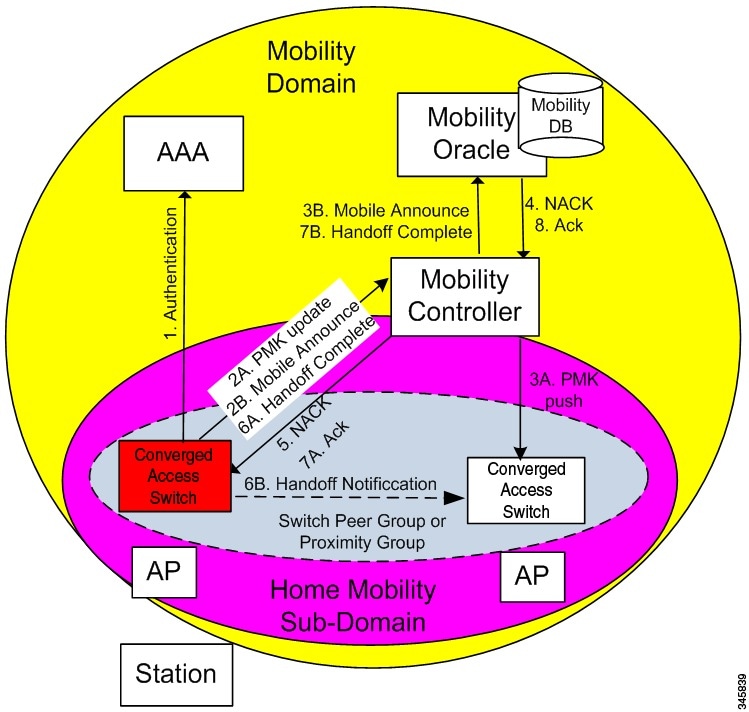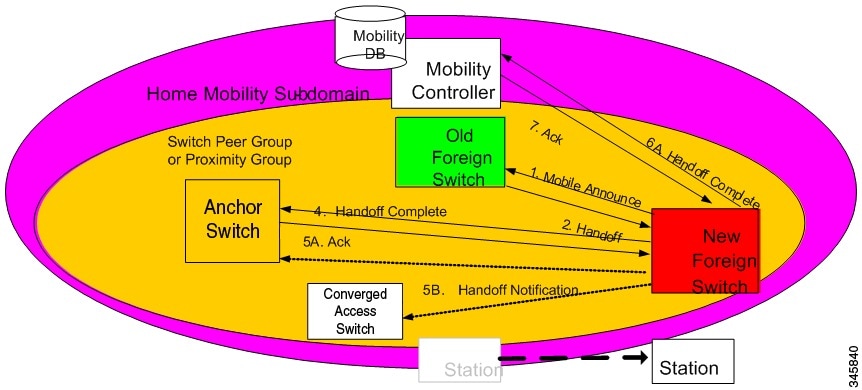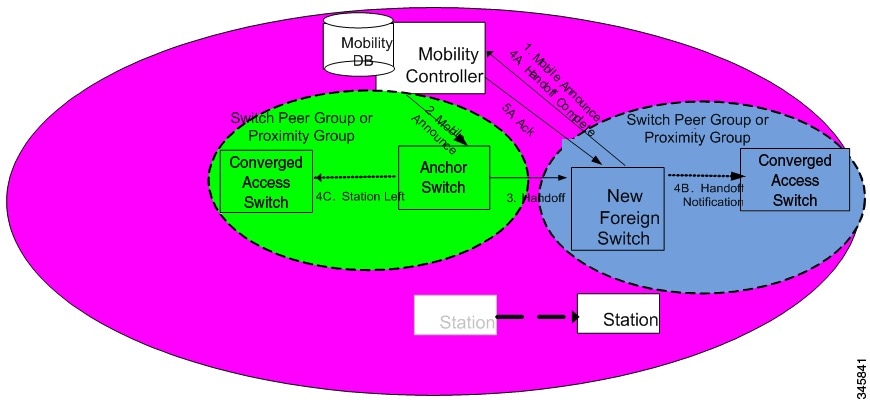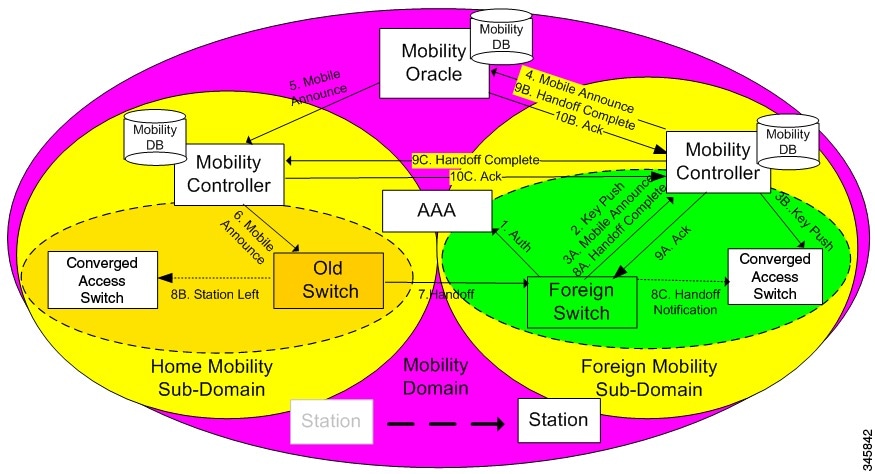About Mobility Control Protocols
The mobility control protocol is used regardless of whether tunneled or routed. The mobility control protocol is used for mobility events between the MO, MC and MA.
- Distributed approach, using the direct communication with the switches in their respective SPG, as well as
- Centralized approach, using the MC and MO.
The goal is to reduce the overhead on the centralized MC, while limiting the interactions between switches to help scale the overall system.





 Feedback
Feedback